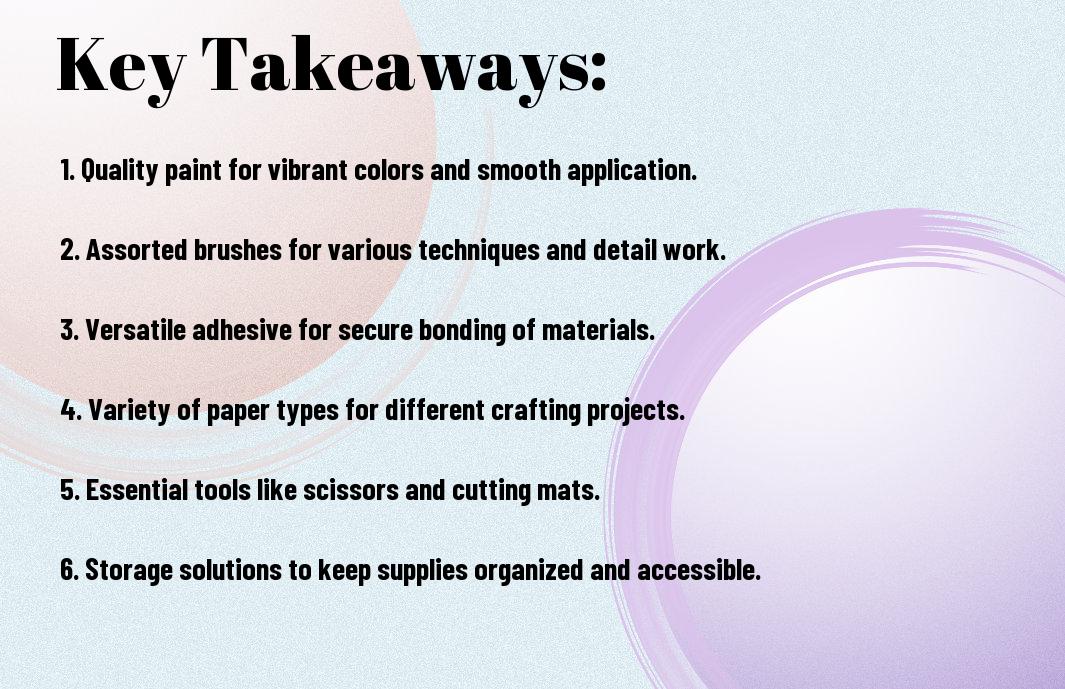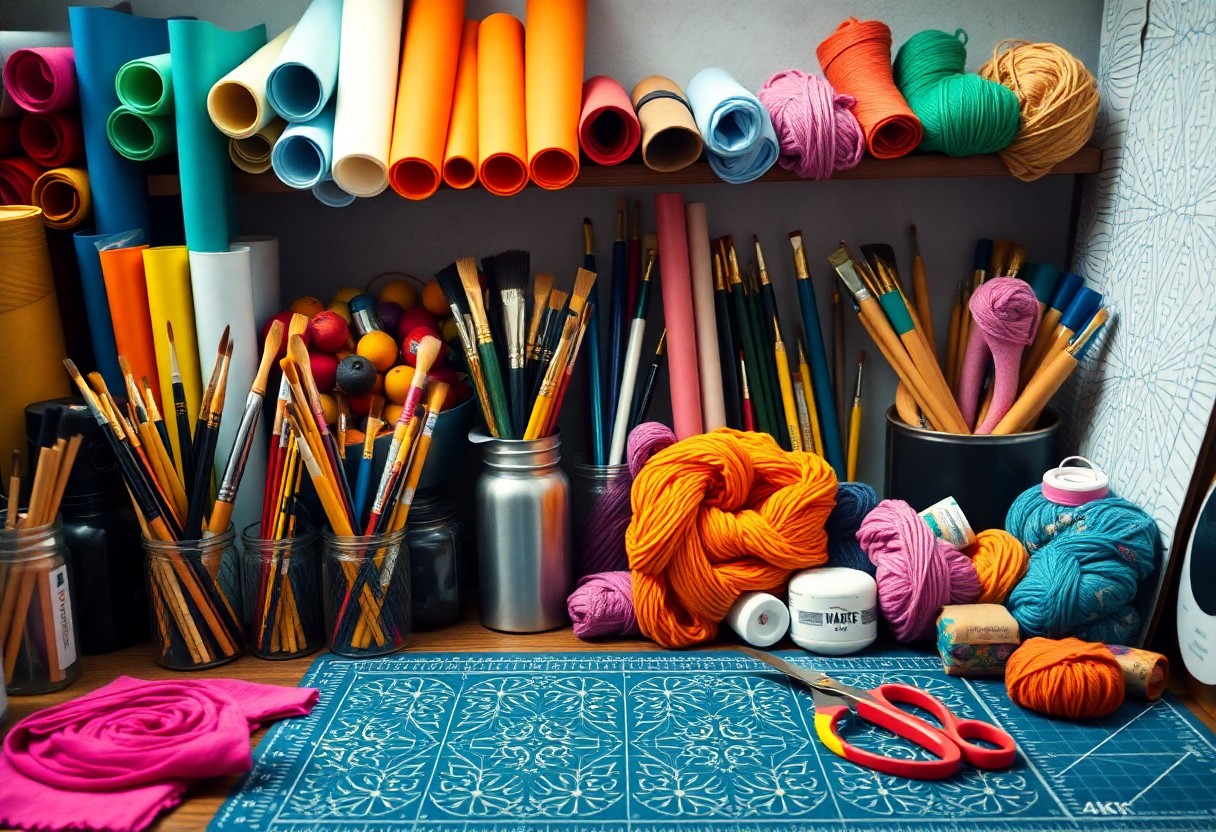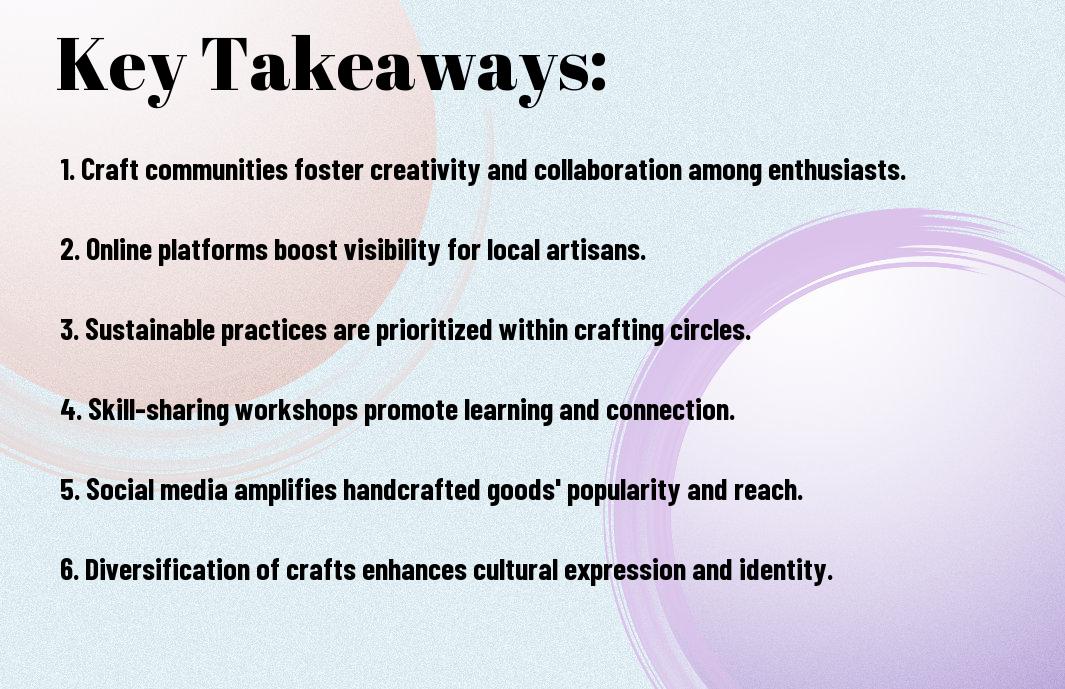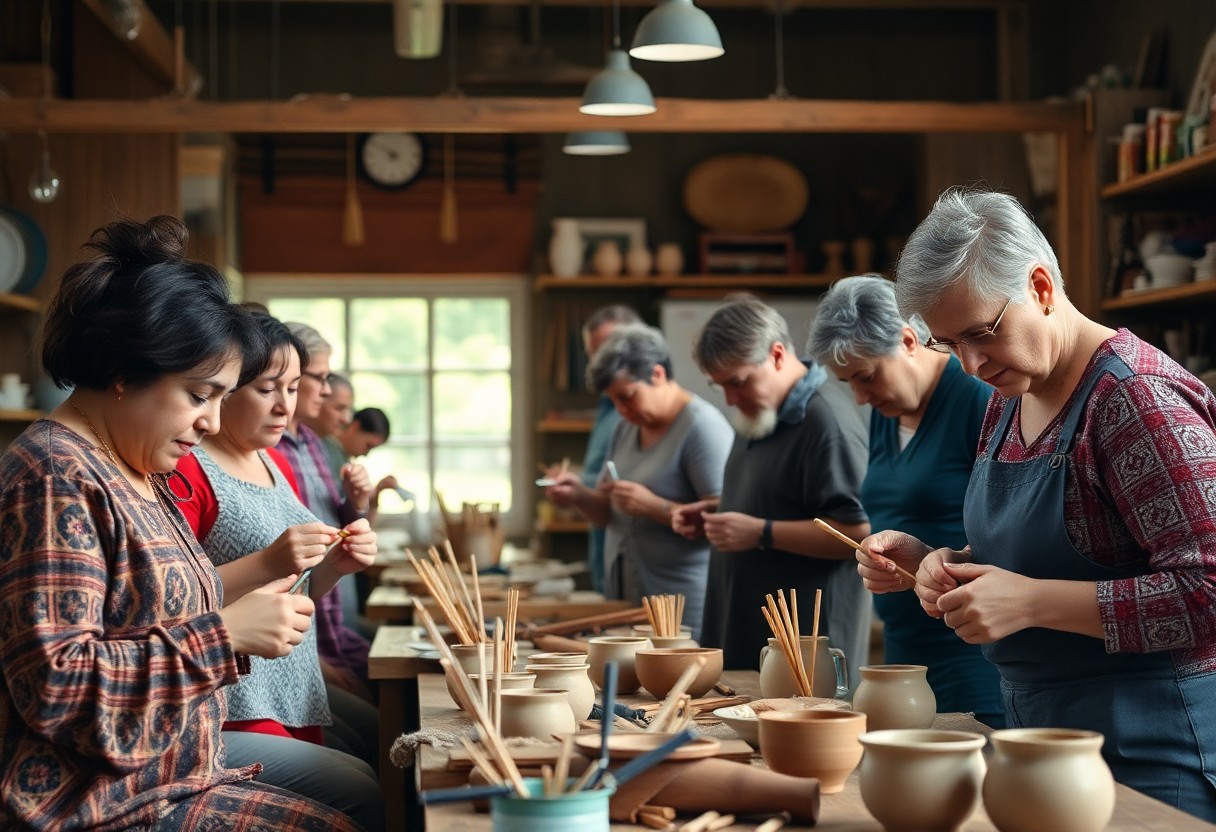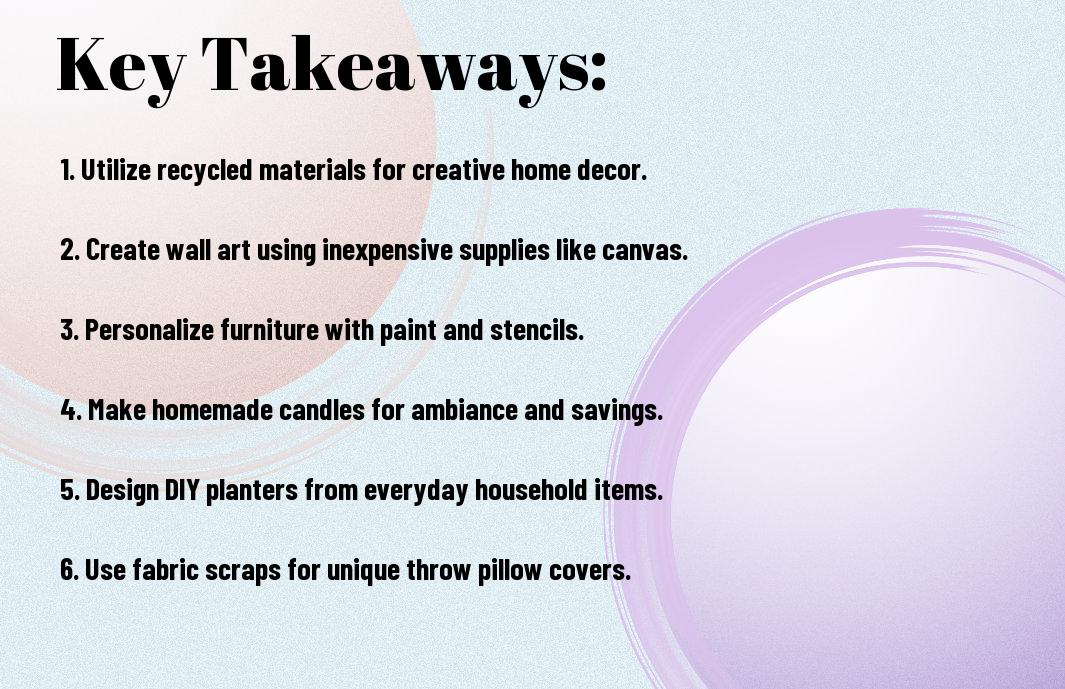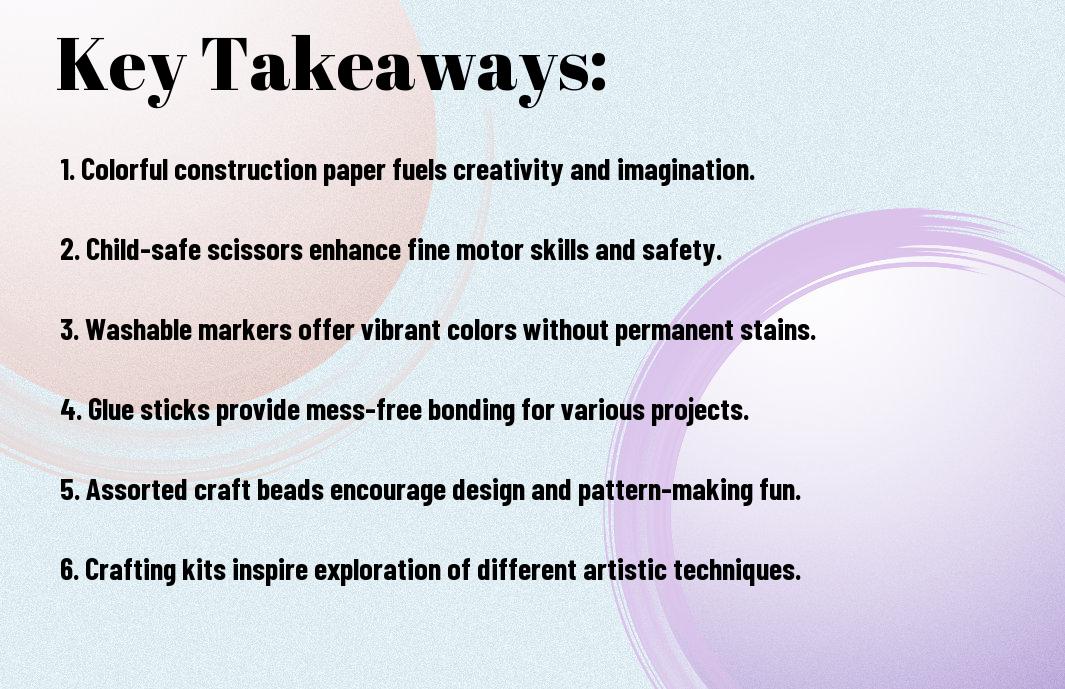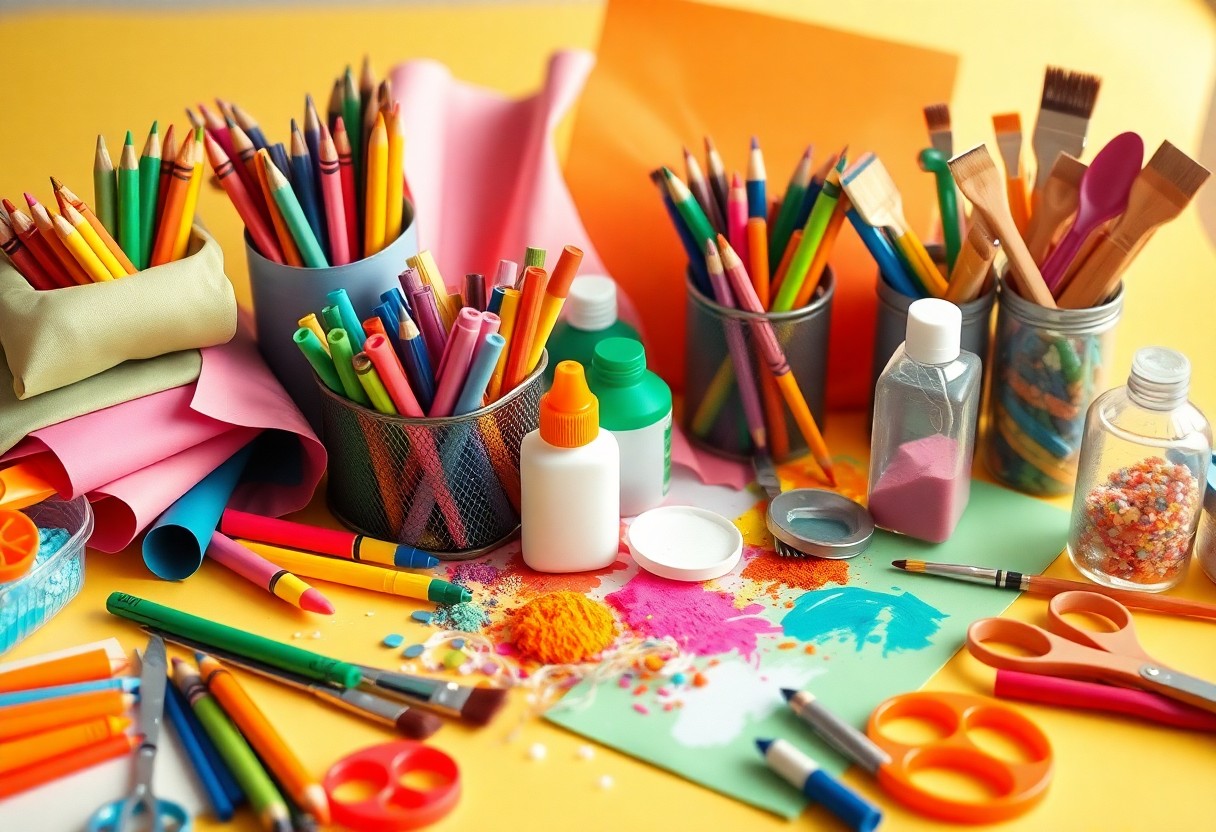You step into your workshop, surrounded by snow outside, and your hands itch to create. You’ve got the time, now you need the ideas. Your winter crafting journey starts here. You’ll find projects to repurpose old items, to make your home cozier, and to give as gifts. You’ll get your hands on materials, follow simple steps, and make something with your own hands, feeling the satisfaction of creating something from scratch.
Key Takeaways:
To make the most out of your winter crafting experience, consider the following points:
- Engage in Knitting or Crochet projects to create warm and cozy items like hats, gloves, and scarves, which make perfect gifts or personal accessories for the cold season.
- Explore Paper Crafting techniques, such as card making, gift tagging, and scrapbooking, to add a personal touch to your winter gifts and decorations, using materials like glitter, snowflake patterns, and festive colors.
- Try your hand at Upcycled or Repurposed craft projects, transforming old items like mason jars, twine, and pinecones into unique decorative pieces, such as candle holders, wreaths, and centerpieces, to add a touch of warmth and personality to your home.
Selecting Materials
A good winter craft project starts with the right materials. You’ll need to consider what you want to create and what supplies you’ll need to get started.
Choosing the Right Fabrics
For those who enjoy sewing, picking the right fabrics is key. You’ll want to select materials that are warm and durable, such as wool or fleece, to create a cozy winter project.
Essential Crafting Tools
An assortment of basic tools will get you started on your winter craft project. You’ll need items like scissors, glue, and yarn to bring your idea to life.
For instance, having a good pair of scissors will make cutting through thick fabrics easier, while a reliable glue gun will help you bond materials together quickly. You’ll find that with the right tools, your project will come together smoothly and efficiently, allowing you to enjoy the process of creating something with your own hands.
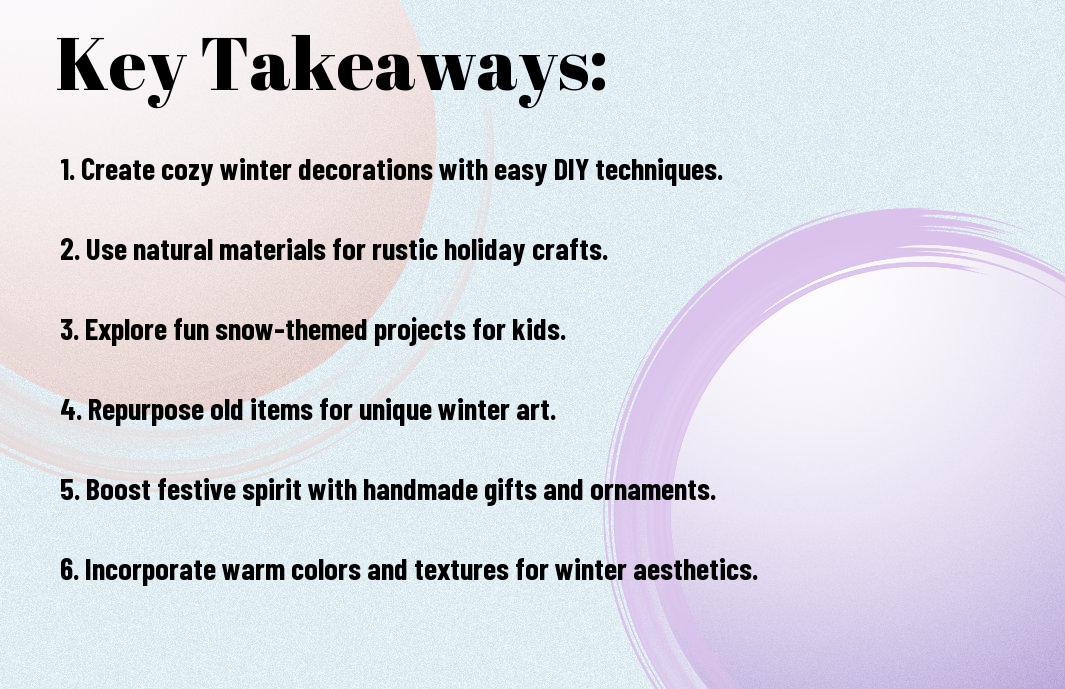
Winter-themed Crafts
Any craft project that captures the essence of winter can be a great way to get into the holiday spirit. You can make decorations, gifts, and other items that reflect the season’s magic.
Snowflake Decorations
With simple materials like paper and glue, you can create beautiful snowflake decorations to hang in your windows or from your ceiling. You’ll find that the intricate patterns and delicate designs add a touch of winter wonder to your home.
Handmade Ornaments
Ornate or simple, handmade ornaments can be a great way to personalize your holiday tree. You can make them from various materials like wood, metal, or glass, and customize them to fit your style.
Due to their unique nature, handmade ornaments make great gifts for friends and family. You can create a set of ornaments that reflect your loved ones’ interests or hobbies, making them a thoughtful and personalized present. As you work on your ornaments, you’ll find that the process is just as enjoyable as the end result, allowing you to relax and get into the holiday spirit. You’ll be able to treasure your handmade ornaments for years to come, and they will serve as a reminder of the time and effort you put into creating something special.
Cozy Home Decor
After a long day, you want your home to feel warm and inviting. You can achieve this with simple winter craft projects that add a personal touch to your space.
Knitted Blankets
Opposite to store-bought blankets, knitted ones provide a sense of comfort and coziness, and you can make them yourself with some yarn and a few basic stitches.
Winter-inspired Centerpieces
Above all, your coffee table or dining table needs a centerpiece that reflects the season, and you can create one using pinecones, twigs, and candles.
The key to a beautiful winter-inspired centerpiece is to keep it simple and natural, using elements like pine, holly, or frosted glass to create a warm and inviting ambiance, and you can arrange them in a way that suits your style and decor, making your home feel cozy and welcoming during the cold winter months.
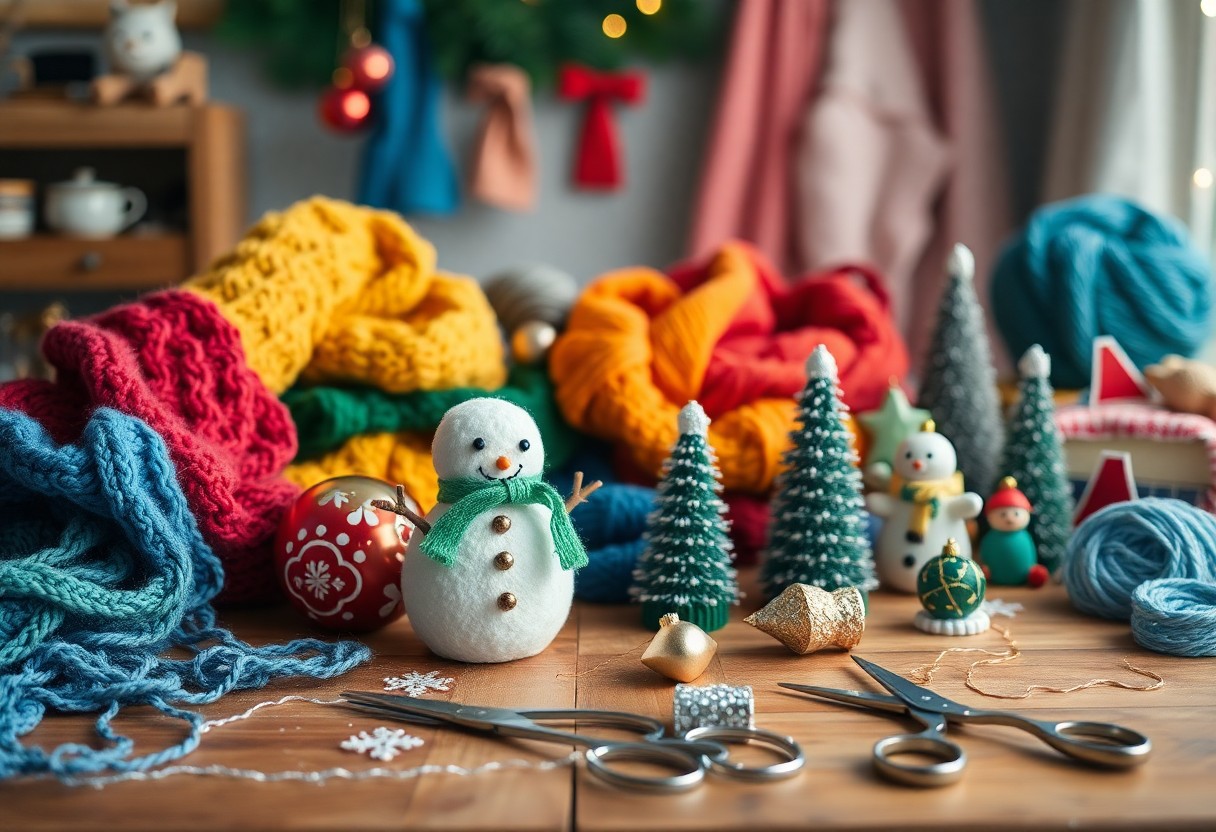
Gift Ideas
Not every gift has to be expensive or store-bought. You can create something special with your own hands. Winter is the perfect time to get crafty and make gifts for your loved ones.
Personalized Mugs
With a few simple materials, you can create personalized mugs that show you care. You can paint or decoupage your favorite designs onto the mug, making it a unique gift for friends and family.
Handmade Candles
For a cozy and thoughtful gift, consider making handmade candles. You can customize the color and scent to fit your loved one’s style, making it a truly personal present.
In addition, making handmade candles allows you to control the ingredients and quality, ensuring a high-quality gift that will be appreciated. You can experiment with different waxes, fragrances, and dyes to create a one-of-a-kind candle that reflects your personality and style, making it a special and meaningful gift for your loved ones.
Tips and Tricks
To get the most out of your winter craft projects, consider the following:
- Use high-quality materials
- Follow patterns carefully
. You’ll find that your projects turn out better. Recognizing your mistakes is key to improving your craft.
Working with Yarn
Techniques for handling yarn are imperative. You’ll need to know how to knit, purl, and cast on to create something worthwhile. Your weaving will be tighter, your stitches even.
Adding a Personal Touch
Opposed to mass-produced items, your crafts will have character. You can add your own style, making each piece unique. Your touch will make it special.
Further, when adding a personal touch, you’ll want to think about what makes your craft distinct. You can experiment with different colors, textures, and patterns to create something that reflects your personality. Your winter craft project will be a one-of-a-kind item that you can be proud of, and it will make a great gift for someone special.
Seasonal Inspiration
Your winter craft projects start with the season’s inspiration, drawing from its unique landscapes and emotions.
Winter Wonderland Scenes
Any moment you step outside, you’re surrounded by snow-covered trees, frozen lakes, and frosty air, all begging to be captured in your crafts.
Frosty Morning Crafts
Along with the cold comes a stillness, a quiet that sparks creativity, and you can harness this to create beautiful, delicate pieces that evoke the chill of a winter morning.
Crafts like knitting, painting, and pottery can help you express the serene beauty of frosty mornings, and as you work, you’ll find that the calm and tranquility of the season seep into your creations, making them truly special and reflective of your winter experience.
To wrap up
Conclusively, you’ve now got your hands on the best winter craft projects. You can put your skills to the test, and in no time, your home will be filled with your creations. You’ll find that these projects bring a sense of warmth and coziness to your space, and you’ll be proud to showcase your handmade work to your loved ones. Your winter will be filled with joy and creativity, and that’s all that matters.
FAQ
Q: What are some popular winter craft projects that can be made at home?
A: Some popular winter craft projects that can be made at home include knitting or crocheting warm clothing and accessories, such as hats, scarves, and gloves, as well as making decorations like snowflakes, wreaths, and ornaments. You can also try your hand at making candles, soaps, and other home fragrances to create a cozy atmosphere. Additionally, you can make winter-themed crafts like snow globes, pinecone bird feeders, and handmade cards to give as gifts or use to decorate your home.
Q: What materials are needed for a winter craft project?
A: The materials needed for a winter craft project vary depending on the specific project. For knitting or crocheting, you will need yarn, knitting needles or a crochet hook, and scissors. For making decorations, you may need materials like paper, glue, scissors, and string or twine. For making candles and soaps, you will need wax, vital oils, and molds. You may also need additional materials like fabric, felt, or ribbons to add embellishments to your projects. It’s always a good idea to check the specific instructions for the project you want to make to ensure you have all the necessary materials.
Q: How can I make my winter craft projects more environmentally friendly?
A: There are several ways to make your winter craft projects more environmentally friendly. One way is to use recycled or repurposed materials, such as old sweaters or fabric scraps, to make new items like hats, scarves, or bags. You can also use natural materials like pinecones, twigs, and leaves to make decorations. Additionally, you can choose to use eco-friendly materials like soy wax or beeswax to make candles, and opt for vital oils that are sustainably sourced. You can also try to reduce waste by using up leftover materials and avoiding single-use plastics.
Q: Can I make winter craft projects with my kids?
A: Yes, winter craft projects can be a fun and creative activity to do with your kids. Many winter craft projects, such as making snowflakes, decorating ornaments, or making handmade cards, are easy and safe for kids to do with minimal supervision. You can also adapt more complex projects, like knitting or crocheting, to make them kid-friendly by using larger needles or hooks and simpler patterns. Making winter crafts with your kids can be a great way to spend quality time together, teach them new skills, and create lasting memories. Just be sure to supervise your kids when using materials like scissors, glue, or hot wax.
Q: How can I display and store my winter craft projects?
A: There are many ways to display and store your winter craft projects, depending on the type of project and the space you have available. You can display your projects on a mantel, shelf, or side table, or hang them on the wall or in a window. For smaller projects like ornaments or decorations, you can store them in a decorative box or container when not in use. For larger projects like knitted or crocheted items, you can store them in a closet or on a shelf in a cool, dry place. You can also consider giving your projects as gifts or donating them to a local charity or community organization.
